When you load the roof, the centre of gravity of the vehicle rises and the usual driving characteristics as well as the steering and braking characteristics change. During cornering, the vehicle tilts more strongly and may react more sluggishly to steering movements.
If you exceed the maximum roof load, the driving characteristics, as well as the steering and braking characteristics, will be greatly impaired.
The vehicle could be damaged by roof racks which have not been tested and approved by Mercedes-Benz.
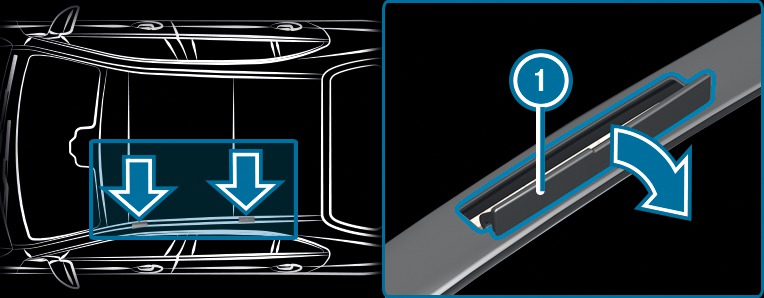
The covers may be damaged and scratched when being opened.
 upwards in the direction of the arrow.
upwards in the direction of the arrow.  .
. If the rear bench seat/rear seat and seat backrest are not engaged, they could fold forwards, e.g. during sudden braking or in the event of an accident.
If this were the case, the vehicle occupant would be forced into the seat belt by the rear bench seat/rear seat or by the seat backrest. The seat belt would not be able to provide the intended protection and could cause additional injury.
Objects or loads in the boot cannot be restrained by the seat backrest.
The rear seat backrest head restraints are fully inserted.
If the seat backrest is not engaged and locked, this will be shown on the multifunction display on the instrument cluster.
The centre and outer seat backrests can be folded forwards separately.

 .
. 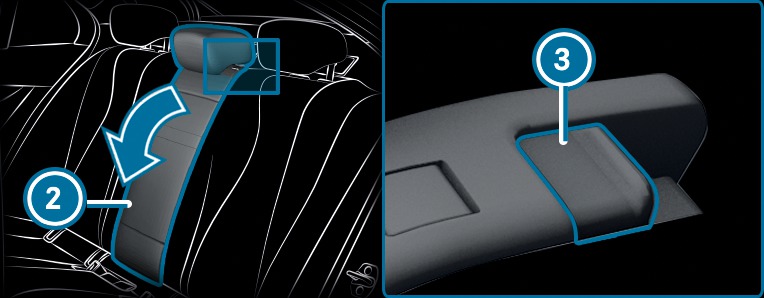
Ensure that the centre seat backrest has been unlocked.
 of seat backrest
of seat backrest  forwards.
forwards. If the rear bench seat/rear seat and seat backrest are not engaged, they could fold forwards, e.g. during sudden braking or in the event of an accident.
If this were the case, the vehicle occupant would be forced into the seat belt by the rear bench seat/rear seat or by the seat backrest. The seat belt would not be able to provide the intended protection and could cause additional injury.
Objects or loads in the boot cannot be restrained by the seat backrest.
The seat belt could become trapped and thus damaged when folding back the seat backrest.
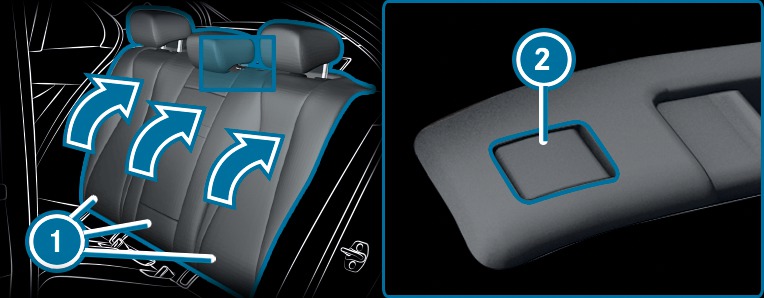
 back until it engages.
back until it engages. Left and right seat backrests: if the seat backrest is not engaged and locked, this will be shown on the multifunction display on the instrument cluster.
Centre seat backrest: if the seat backrest is not engaged and locked, red lock verification indicator  will be visible.
will be visible.
If the handle in the boot is left protruding, the handle may be damaged.
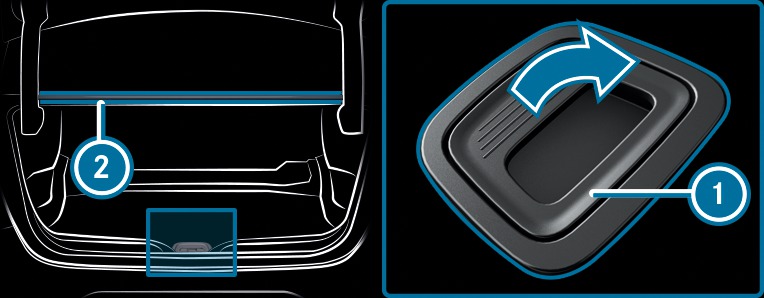
 up and hook it into drip rail
up and hook it into drip rail  .
. The through-load ski bag in conjunction with the lashing straps cannot restrain any objects other than skis.
if you transport other heavy or sharp-edged objects in the through-load ski bag
if you do not secure the through-load ski bag with the lashing straps
A maximum of four pairs of skis or two snowboards may be transported in the ski and snowboard bag.
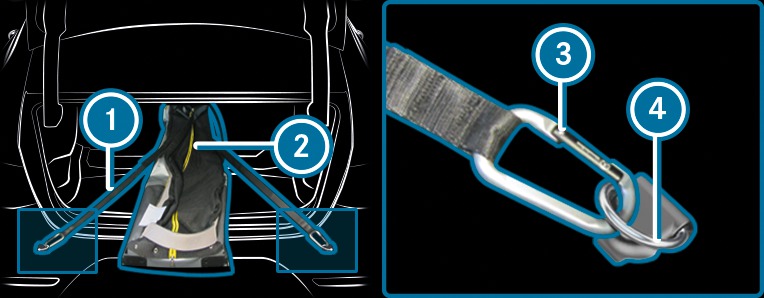
 .
.  .
.  .
.  of lashing straps
of lashing straps  in tie-down eyes
in tie-down eyes  . Make sure that the fasteners of hooks
. Make sure that the fasteners of hooks  are facing upwards.
are facing upwards. If the ball neck is not engaged, the trailer may come loose.
The fully-electric trailer hitch could be mechanically damaged by applying additional pressure when the ball neck is being extended or retracted.
The transmission has been shifted to position
 or
or  .
. The range of movement is clear.
Only when retracting: ensure trailer cables or adapter plugs have been removed.
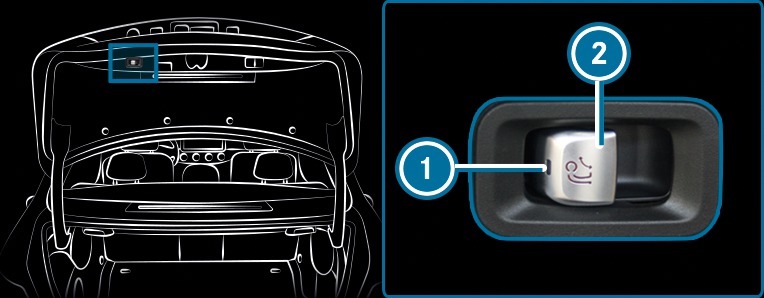
 .
. Indicator lamp  will flash and the Trailer coupling extending… display message will appear on the multifunction display.
will flash and the Trailer coupling extending… display message will appear on the multifunction display.
The ball neck will extend fully electrically.
The ball neck is securely locked in place when indicator lamp  lights up continuously.
lights up continuously.
If the ball neck is not securely locked in place, indicator lamp  flashes and the Check trailer hitch lock display message appears on the multifunction display.
flashes and the Check trailer hitch lock display message appears on the multifunction display.
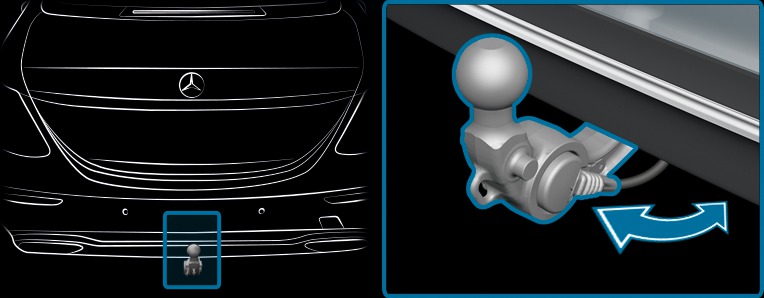
 .
. Indicator lamp  will flash and the Trailer coupling extending… display message will appear on the multifunction display.
will flash and the Trailer coupling extending… display message will appear on the multifunction display.
The ball neck will retract fully electrically.
The ball neck is securely locked into place once indicator lamp  goes out.
goes out.
If the ball neck is not securely locked in place, indicator lamp  flashes and the Check trailer hitch lock display message appears on the multifunction display.
flashes and the Check trailer hitch lock display message appears on the multifunction display.
Observe the notes on loading the vehicle More.
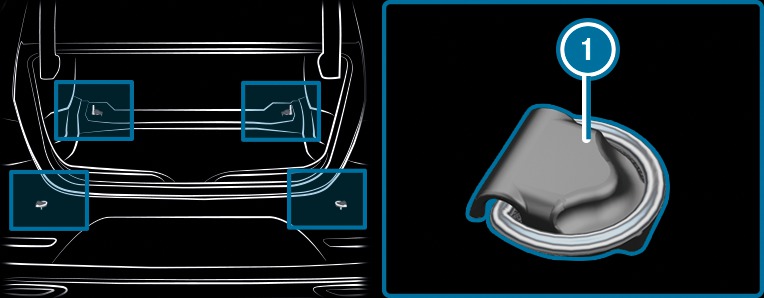

If objects in the vehicle interior are stowed incorrectly, they can slide or be thrown around and hit vehicle occupants. In addition, cup holders, open stowage spaces and mobile phone receptacles cannot always retain all objects they contain.
There is a risk of injury, particularly in the event of sudden braking or a sudden change in direction.
Observe the notes on loading the vehicle.
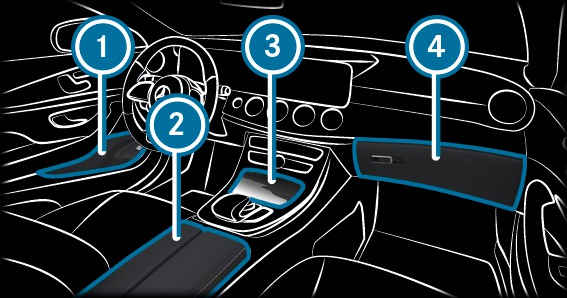




If objects in the vehicle interior are stowed incorrectly, they can slide or be thrown around and hit vehicle occupants. In addition, cup holders, open stowage spaces and mobile phone receptacles cannot always retain all objects they contain.
There is a risk of injury, particularly in the event of sudden braking or a sudden change in direction.
Observe the notes on loading the vehicle.
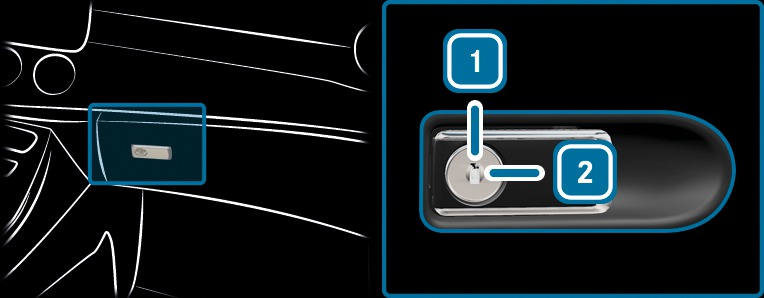
 (to lock) or anti-clockwise
(to lock) or anti-clockwise  (to unlock).
(to unlock). If objects in the vehicle interior are stowed incorrectly, they can slide or be thrown around and hit vehicle occupants. In addition, cup holders, open stowage spaces and mobile phone receptacles cannot always retain all objects they contain.
There is a risk of injury, particularly in the event of sudden braking or a sudden change in direction.
Observe the notes on loading the vehicle.
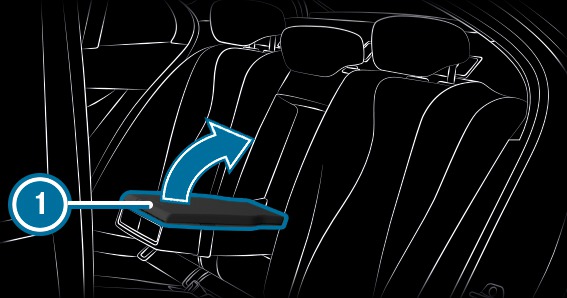
 and swing the cover of the armrest upwards.
and swing the cover of the armrest upwards. 
